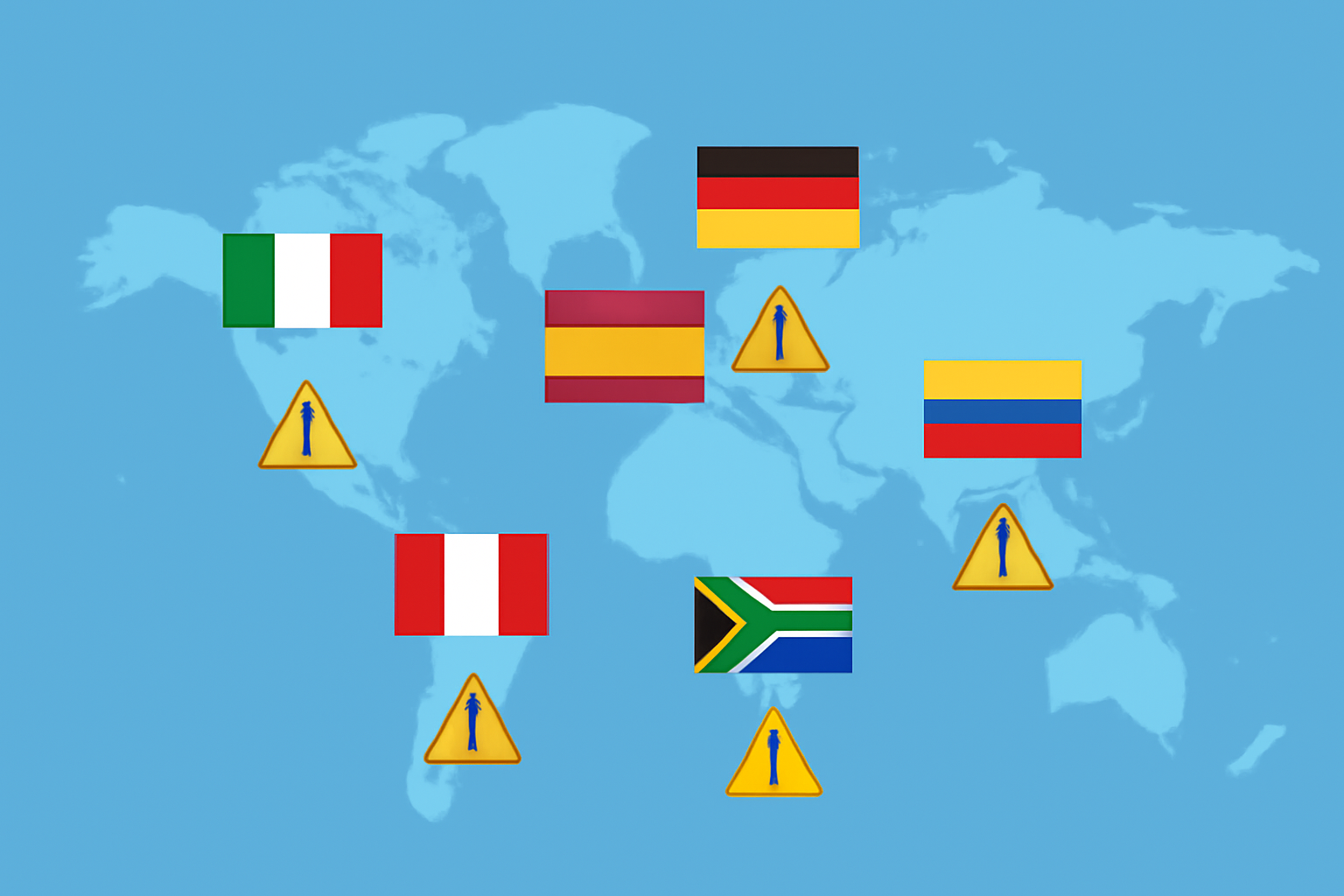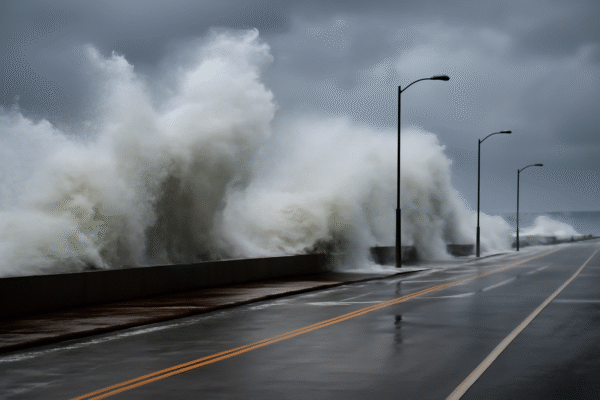Powerful 7.5 Magnitude Earthquake Strikes South Atlantic, Tsunami Advisory Issued for Antarctica
A powerful magnitude 7.5 earthquake struck the South Atlantic Ocean near Argentina, triggering an urgent tsunami advisory for parts of Antarctica. The earthquake, which occurred in the Drake Passage, is a stark reminder of the seismic risks in the region. While the area is not known for frequent earthquakes, this recent event underscores the potential for sudden seismic activity, prompting authorities to issue warnings across neighboring regions.
Earthquake Details and Immediate Impact
On Thursday evening, a significant earthquake with a preliminary magnitude of 7.5 struck the South Atlantic Ocean, around 710 kilometers (441 miles) southeast of Ushuaia, Argentina. Initially, the United States Geological Survey (USGS) reported the earthquake’s magnitude as 8.0 but later revised it to 7.5. The quake hit at 11:16 p.m. local time, sending shockwaves through the region.
The epicenter was located at a depth of 10.8 kilometers (6.7 miles) in the Drake Passage, an area between South America’s southern tip and the Antarctic Peninsula. Although this region is not known for regular seismic activity, it lies within an active geological zone that makes it prone to seismic events.
Despite the quake’s significant magnitude, authorities did not report any immediate casualties or substantial damage. The remote location of the epicenter, away from densely populated areas, likely reduced the immediate impact. However, the event has drawn attention to the risks posed by earthquakes in this region and prompted further monitoring.
Tsunami Risk and Advisory for Antarctica
Following the earthquake, Chilean authorities issued an urgent tsunami advisory for parts of Antarctica. The advisory was a precautionary measure to ensure that nearby regions, especially coastal Antarctica, were prepared for potential tsunami waves. As of now, there have been no reports of waves reaching land, but the advisory remains in place as scientists continue to monitor the situation.
Although tsunamis are relatively rare in the South Atlantic, the region’s vulnerability to seismic events makes it essential for authorities to act swiftly and prepare for potential threats. While the immediate tsunami risk appears to be low, the possibility of future events continues to be a concern for coastal communities.
Historical Context: Tsunami Risks in the South Atlantic
The South Atlantic is not typically associated with frequent tsunami events, but the potential for large-scale seismic events remains. In 1929, a magnitude 7.2 earthquake off the coast of Newfoundland, Canada, triggered a deadly tsunami, highlighting the seismic risks in the Atlantic Ocean. The event caused an underwater landslide, resulting in a massive wave that claimed lives in the Burin Peninsula.
Another notable historical event occurred in 1755, when the Lisbon earthquake produced a devastating tsunami. Waves from the Lisbon event spread across the Iberian Peninsula, the Azores Islands, and even reached as far as the Caribbean and Newfoundland. While the South Atlantic has not experienced a major tsunami in recent years, the region remains vulnerable to seismic activity that could generate destructive waves.
The Threat of Underwater Landslides
In addition to earthquakes, underwater landslides pose a significant risk for generating tsunamis in the Atlantic. These landslides can displace large amounts of water, creating waves that can travel thousands of kilometers across the ocean. Studies suggest that regions like the continental slopes off the eastern U.S. and Canada, as well as the Storegga Slides off Norway’s coast, could be sources for large-scale underwater landslides, capable of generating tsunamis.
These events are rare but have the potential to cause widespread devastation if they occur. Although the risk of such landslides in the South Atlantic is lower than in other regions, the earthquake off Argentina serves as a reminder that the area is not immune to the hazards associated with seismic activity.
The Canary Islands: A Potential Tsunami Risk in the Atlantic
Another potential tsunami risk in the Atlantic is linked to volcanic activity in the Canary Islands, particularly the possibility of a catastrophic collapse of the western flank of the La Palma volcano. Such an event could trigger a tsunami with waves of up to 3 meters, which could impact the U.S. East Coast. Though considered unlikely, the potential impact of such an event underscores the need for ongoing seismic monitoring in the region.
While the South Atlantic is less prone to “megathrust” earthquakes commonly seen in regions like Japan or Indonesia, it still faces seismic risks capable of triggering tsunamis. For example, a repeat of the 1755 Lisbon earthquake could send waves as high as 3 meters to the coastline of Atlantic Canada.
The Growing Need for Seismic Awareness
As seismic research advances, it is becoming increasingly clear that regions such as the Drake Passage, continental slopes, and the Canary Islands require close monitoring. Though the recent 7.5 magnitude earthquake’s immediate effects were limited, the potential for larger seismic events remains. This emphasizes the importance of preparedness in the South Atlantic and Antarctic regions.
Ongoing scientific research into seismic hazards in the region will help improve early warning systems and inform policies for protecting coastal communities. With future events potentially being more severe, continued monitoring and public awareness are essential to mitigating the risks posed by seismic activity.
Conclusion
The recent 7.5 magnitude earthquake in the South Atlantic Ocean serves as a wake-up call for the seismic risks in the region. Although there were no immediate casualties or significant damage, the tsunami advisory issued for Antarctica highlights the need for ongoing vigilance. As seismic activity continues to be a concern in the South Atlantic, it is essential for local authorities and international agencies to remain prepared for the possibility of future events that could impact coastal regions across South America, North America, and beyond.
Increased awareness, scientific research, and early warning systems are crucial for minimizing the potential risks posed by earthquakes and tsunamis in this seismically active area. Coastal communities should remain vigilant and stay informed to ensure a quick and effective response in the event of a major seismic event.
For more travel news like this, keep reading Global Travel Wire















